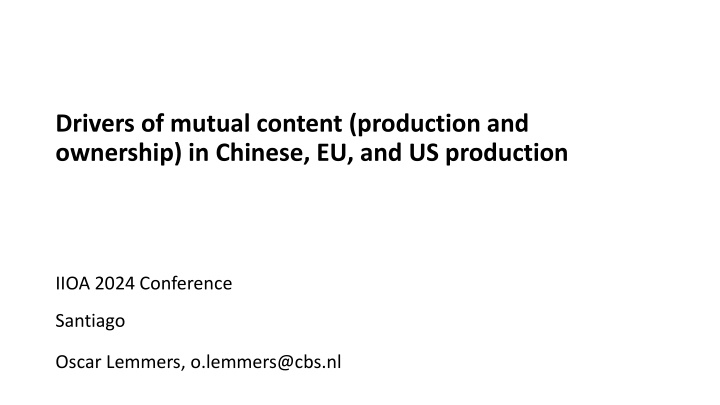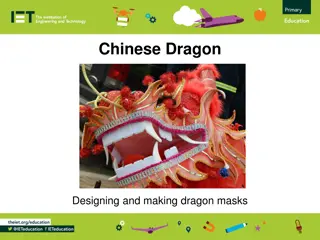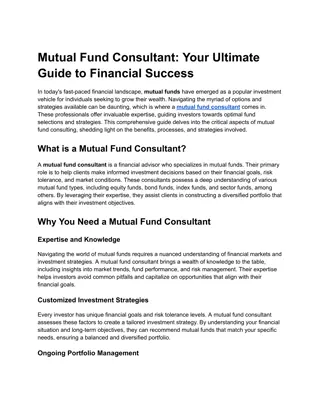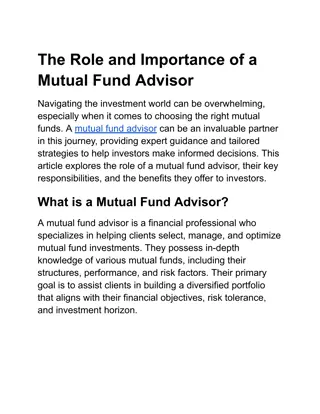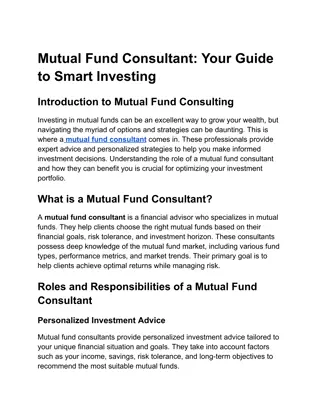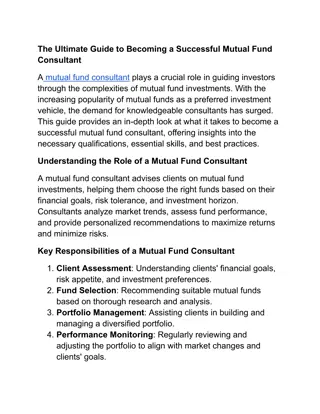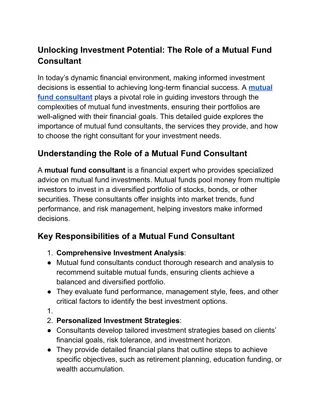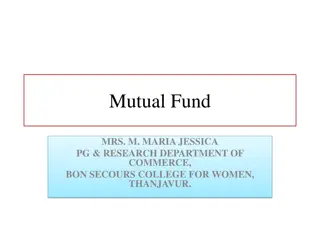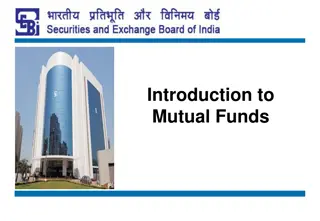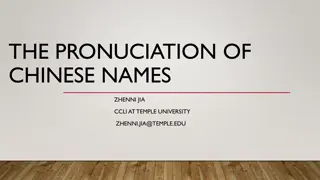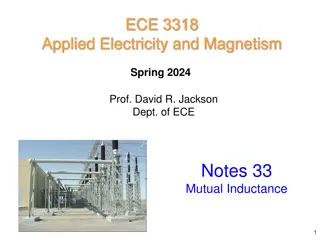Drivers of Mutual Content Production in Chinese, EU, and US Production IIOA 2024 Conference
USA, China, and EU are striving for strategic autonomy in their production processes, with focus on economic resilience and reducing dependencies. The presentation discusses the impacts of ownership and location in global supply chains, considering factors like national security concerns and foreign investment screening.
Download Presentation

Please find below an Image/Link to download the presentation.
The content on the website is provided AS IS for your information and personal use only. It may not be sold, licensed, or shared on other websites without obtaining consent from the author.If you encounter any issues during the download, it is possible that the publisher has removed the file from their server.
You are allowed to download the files provided on this website for personal or commercial use, subject to the condition that they are used lawfully. All files are the property of their respective owners.
The content on the website is provided AS IS for your information and personal use only. It may not be sold, licensed, or shared on other websites without obtaining consent from the author.
E N D
Presentation Transcript
Drivers of mutual content (production and ownership) in Chinese, EU, and US production IIOA 2024 Conference Santiago Oscar Lemmers, o.lemmers@cbs.nl
Disclaimer The author is employed at Statistics Netherlands. The opinions expressed in this presentation are those of the author and are not necessarily in accordance with the policies of Statistics. 2
USA, China and EU strive for strategic autonomy EU strategic autonomy, a.o. related to economic resilience, foreign and security policies. Strategic dependencies, Critical Raw Materials Act, European Chips Act CHIPS and Science Act making the US less dependent on foreign manufacturers of chips by stimulating manufacturing in the US. Infrastructure Investment and Jobs Act includes US content requirements for highways, mass transit, and rail. Made in China 2025 strategy for manufacturing, increase Chinese content of important materials, emphasis on the semiconductor industry since developments there may lead to spinoffs. 3
Standard analysis of GVC dependencies Production in several countries > dependencies. See, e.g., Kuzmenko & echura (2023). If something happens in an industry in a country that produces in your supply chain, you can be affected. Adaptation takes time. Could be a natural disaster (2011 T hoku earthquake and tsunami), a strike, geopolitics (Russian gas), and so on. 4
Location, location, location? Location of production in supply chain - only this matters for dependencies? Everyone who ever rented, knows dependency on the owner of the property! Country of ownership of production in your supply chains matters: if country A owns production somewhere in the world that ultimately ends up in your supply chain, there is a dependence of country A Not only a theoretical concept: Li et al. (2024) consider developing countries and trade in sanctioned goods with Russia. Firms with MNEs headquartered in sanctioning countries applied sanctions more often than domestic firms. 5
Already attention for ownership in own country UNCTAD (2022): national security concerns about foreign ownership of critical infrastructure, core technologies or other sensitive domestic assets Firms might move production at home to foreign affiliates to circumvent issues with country of production (Alfaro and Chor, 2023) European Commission proposed improved screening of foreign investment into the EU to protect against risk (24 January 2024) (and so on) But ownership in the supply chain? 6
Our new approach Adding the ownership dimension brings another type of dependency to light 7
Data to map global value chains and ownership Inter-country input-output table, over 60 countries and 35 industries, from Asian Development Bank OECD AMNE (Cai et al. 2023): for each industry in each country, what is domestically owned, what is foreign owned by which country. Based on Eurostat Inward FATS, Eurostat Outward FATS, data BEA for US, some more sources and FDI with estimates for the confidential part -> complete 8
Drivers of mutual content (production and ownership) in Chinese, EU, and US production 9
Three large economic partners: China, USA and EU USA related content in EU production: the share of value added embodied in EU production that is produced in USA and/or was under US ownership outside the USA Similar: China related content in US production and so on Questions: How large is China/USA/EU related content in mutual production? How did this change over time? What are factors behind this change? Are there opportunities for policy involvement? 10
China/USA/EU related content in mutual production 2000 2019 Difference 2019-2000 Total Total Total Ownership Ownership Ownership Production Production Production % %pt 0.4 4.1 0.4 4.5 1.8 2.0 0.3 1.4 0.3 2.0 0.6 1.4 0.0 2.7 0.1 2.3 1.2 0.7 1.8 6.4 1.4 5.4 2.6 3.2 1.2 2.1 0.9 1.8 1.2 1.7 0.5 4.5 0.4 3.8 1.2 1.2 1.4 1.8 1.0 1.6 0.8 1.2 1.0 0.7 0.4 0.1 0.7 0.5 0.5 1.1 0.4 1.3 0.1 0.6 Chinese content in EU production US content in EU production Chinese content in US production EU content in US production US content in Chinese production EU content in Chinese production Using medians over tradeable industries: in 2000, production of an EU industry contained 1.4% value added produced in US. 2.7% was produced outside USA under USA ownership. Total 4.1 %. In 2019 the total was 6.4%. 11
Decomposing changes over time, 2000-2019 A structural decomposition analysis of the change, building on Oosterhaven & Van Der Linden (1997), with Factors that can be influenced by policies Investments by others in the own territory Exports by others to the own territory Factors that cannot be, or difficult to be, influenced by policies (the rest) General trade fragmentation Changing technology Trade with both countries involved outside the own territory Investments with both countries involved outside the own territory 12
Decomposing change 2000-2019, median for tradeable industries 2.5 2.0 1.5 1.0 0.5 % point 0.0 -0.5 -1.0 -1.5 Chinese content in EU production US content in EU production Chinese content in US production EU content in US production US content in Chinese production EU content in Chinese production Direct trade Direct ownership Fragmentation of production Technology Rest Sizeable impact of direct factors that policies may influence: partner A imported more from partner B or partner B owned more in territory of partner A. Technology played a large part for EU content in US production. 13
Decomposing changes, 2000-2019, electrical & optical industry 12.0 10.0 8.0 6.0 4.0 % point 2.0 0.0 -2.0 -4.0 -6.0 Chinese content in EU production US content in EU production Chinese content in US production EU content in US production US content in Chinese production EU content in Chinese production Direct trade Direct ownership Fragmentation of production Technology Rest Smaller impact of direct factors that policies may influence: partner A imported more from partner B or partner B owned more in territory of partner A. Technology and fragmentation sometimes play a large part. 14
Which value added can be influenced? Currently, look at value added created in country A or owned by country A. That is related to production country A has influence on. Is there more? E.g., value added created in country X, embodied in a product that is exported to country A, used to create exports to country Y. Country A can prevent this flow from X to Y. Should one add value added that flows through country A to the part that can be influenced, using a hypothetical extraction (e.g., Los et al. 2016)? Or is it too much? 15
Conclusion & way forward One can map ownership in the supply chain of individual industries This ownership can be sizeable In spite of strive for autonomy, USA/China/EU related content in USA/China/EU production increased both production and ownership Sizeable part of changes of content in production is explained by changes in direct trade and ownership; can be influenced by policy Is the trend reversing in recent years, can it be reversed in practice? Policy makers ask for more detail in industry, country of production (Africa AfCIOT project!) and country of ownership. 16
Questions, remarks, comments? Now (if time permits), or later via o.lemmers@cbs.nl 17
